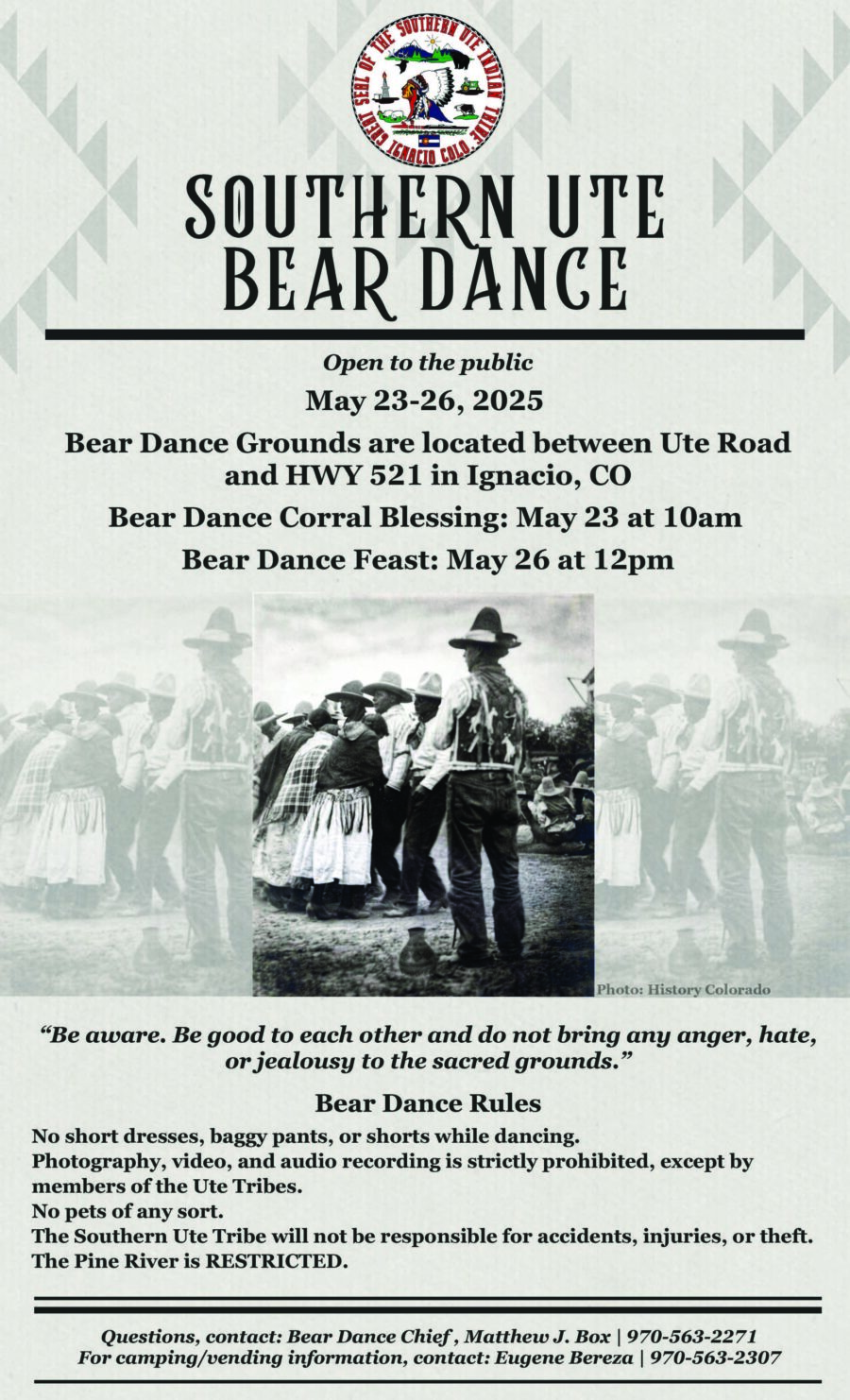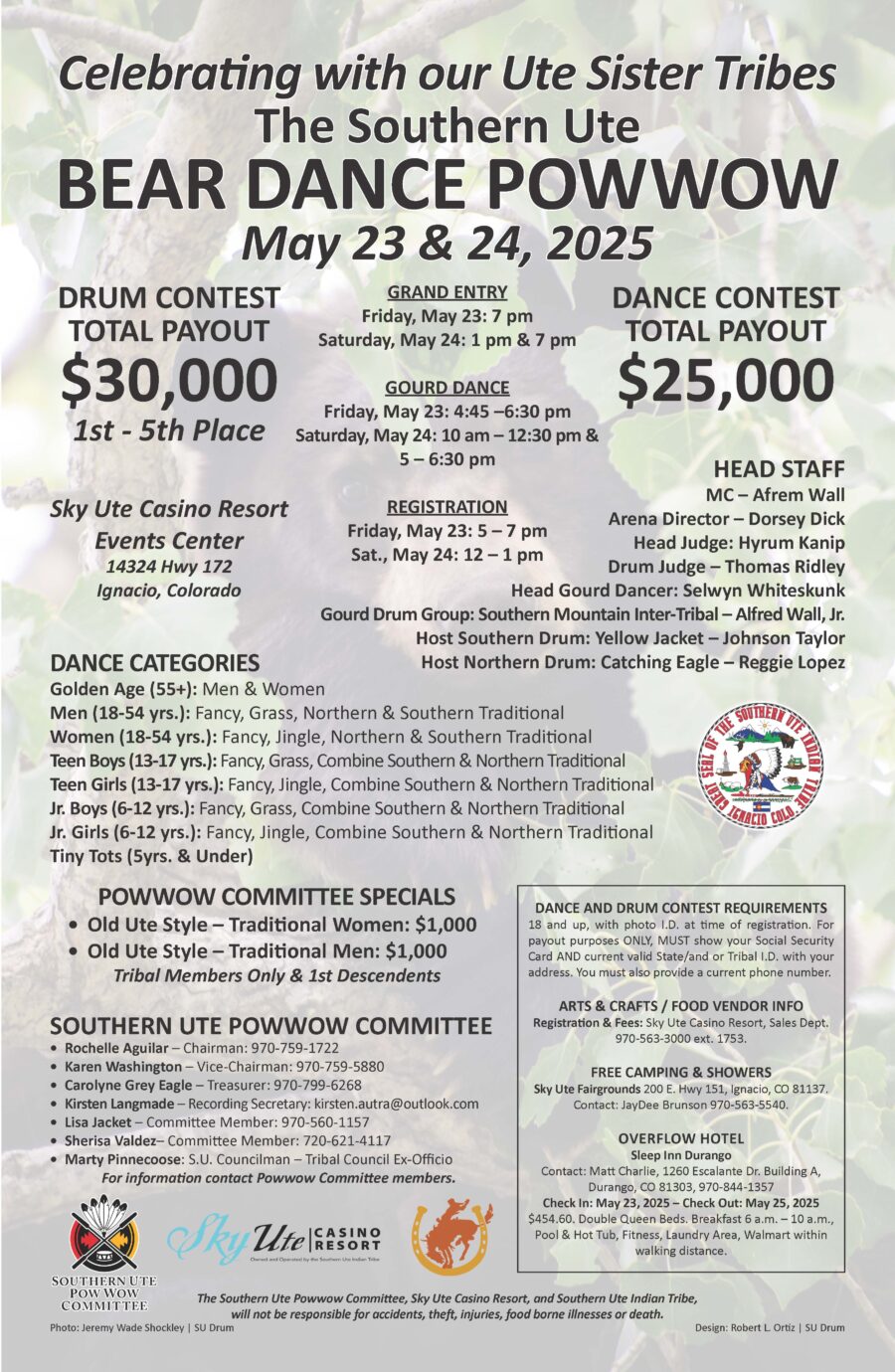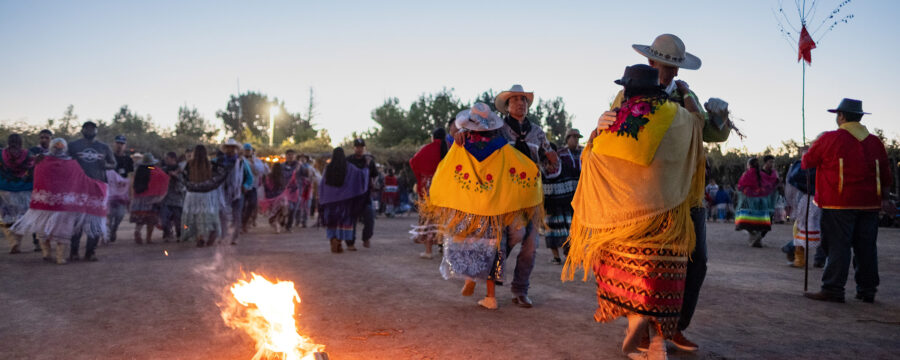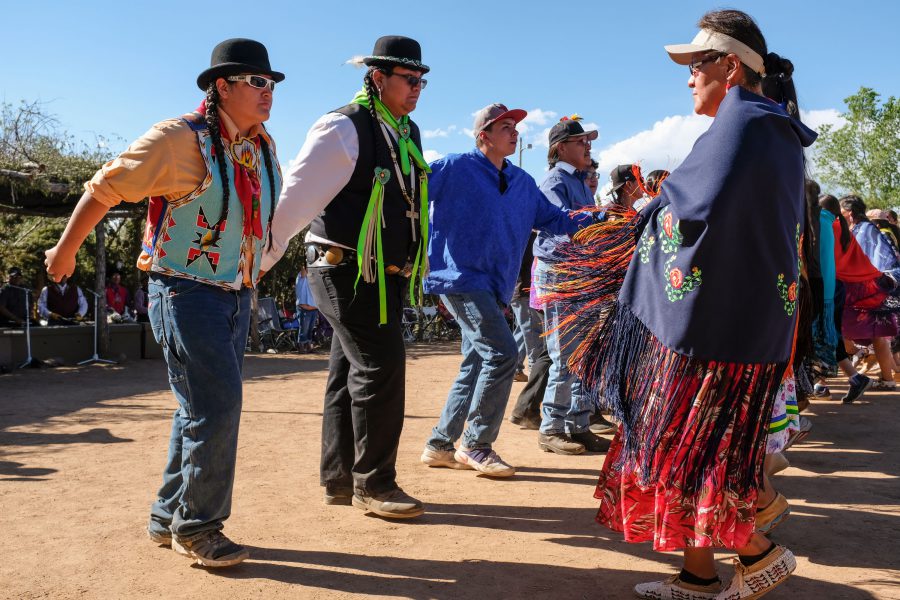It’s Southern Ute Bear Dance Time!



The Annual Ute Bear Dance which is held every spring is a social dance everyone enjoys. Origin of the Bear Dance can be traced back to the fifteenth century when the Spanish first came upon the Utes in the springtime. When the first thunder in the spring was heard, it was time for the Bear Dance.

According to some of the elders, this was usually around the middle of March. All the bands would come and set up camp and prepare for the dance. Many of the singers were ready to sing their songs which they had practiced or dreamed about during the winter months.
The original meaning of the Bear Dance has long dropped by the wayside as modern ways have intervened with the old methods of telling the meaning of the Bear Dance. It was the men who usually prepared the Bear Dance corral and any other functions connected with the Bear Dance. The women’s role was to prepare the family’s clothes that they were to wear during the dance. It was the role of the story teller to tell the family about the way of life and this was done in the winter time when the family was gathered around the camp fires.
The origin of the Ute Bear Dance relates the time when two brothers were out hunting in the mountains and as they became tired, they laid down to rest. One of the brothers noticed a bear standing upright facing a tree and seemed to be dancing and making a noise while clawing the tree. Ute legends or stories remember the time when the elders asked the hunters to go out and gather meat. As they were out hunting, they encountered some small people who ran into the rocks in the hills. They told the elders about them and the elders told them that they were called cliff dwellers which according to archaeologists were called Anasazi, the ancient ones. The one brother went on hunting while the other brother continued to observe the bear. The bear taught the young man to do the same dance and also taught the young man the song that went with the dance.
He told the young man to return to his people and teach them the dance and songs of the bear. The songs according to legends show respect for the spirit of the bear and the respect to the bear spirit makes one strong. After a long winter, everyone was ready to be outside. The Bear Dance was one way which people could release their tensions. The men and women, as they entered the corral, would wear some sort of plumes which at the end of the fourth and final day, they would leave on a cedar tree at the east entrance of the corral. As the Ute’s say, leaving the plume on the tree was to leave your troubles behind and start your life anew.
This information is from the article Bear Dance, by the Southern Ute Drum. Contact the Cultural Preservation Department for more information.
Southern Ute Bear Dancers
In this segment, the Southern Ute Bear Dancers from southern Colorado demonstrate the bear dance, a women’s choice social dance that has been part of their traditions from pre-contact times.
This performance was webcast and recorded in the Potomac Atrium of the National Museum of the American Indian on July 15, 2017.
©2017 Smithsonian NMAI
